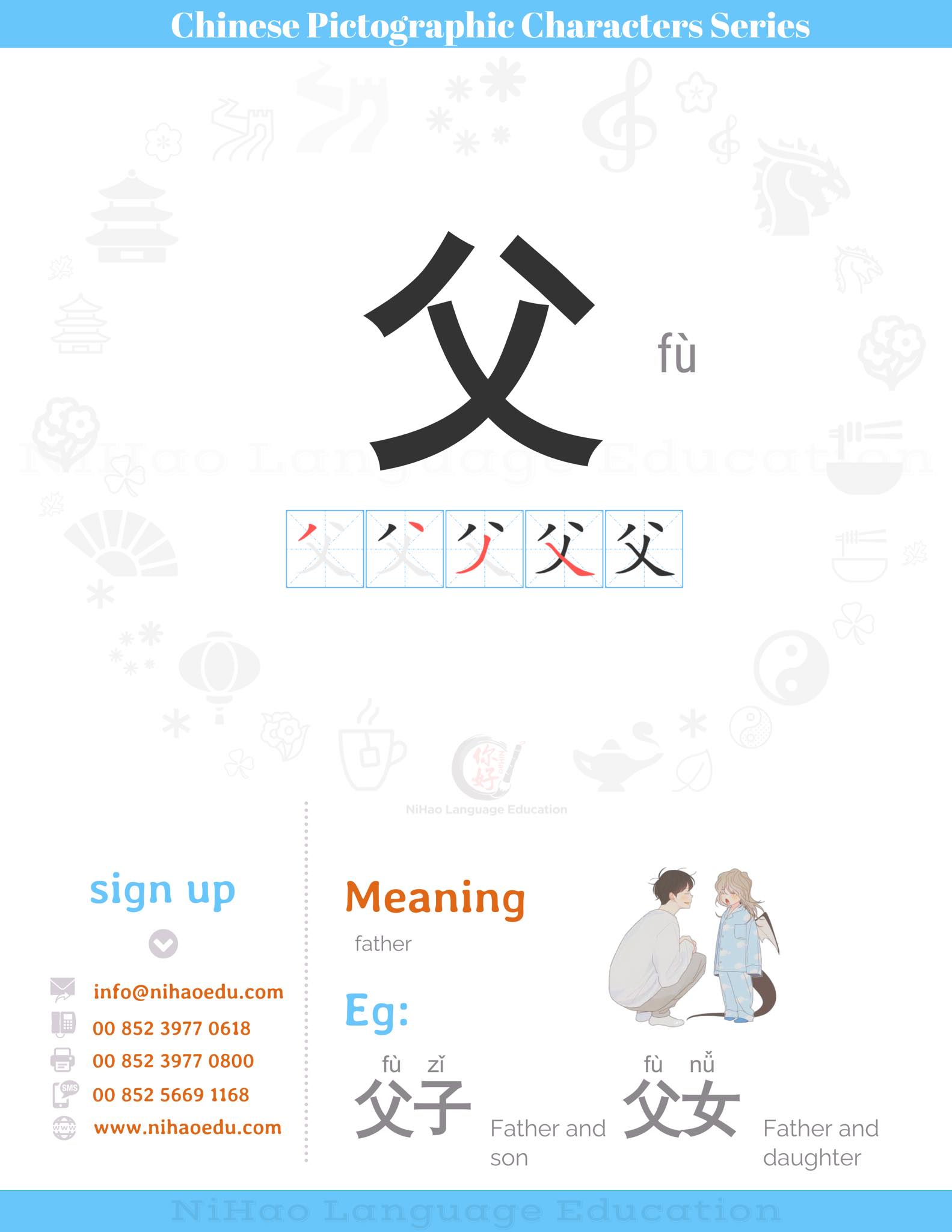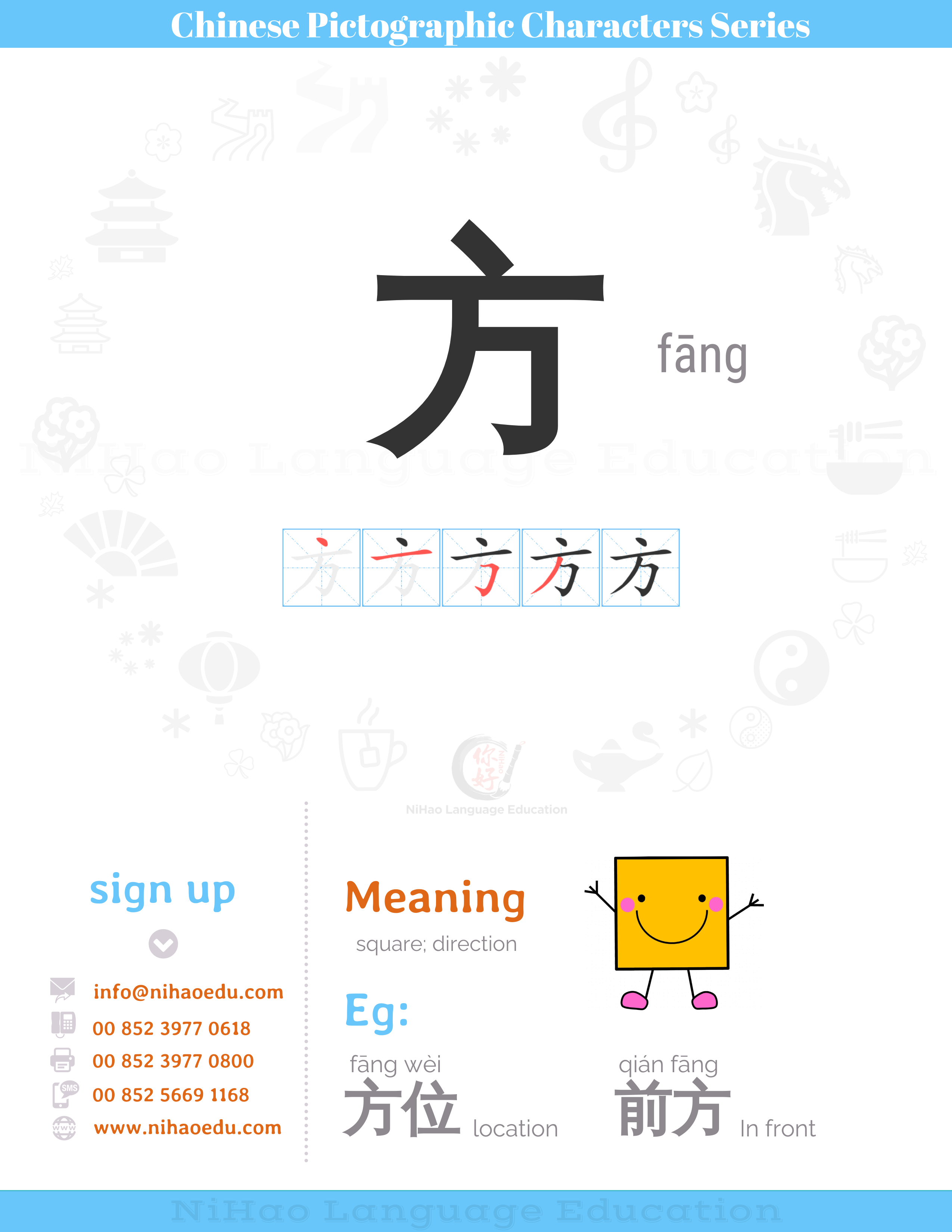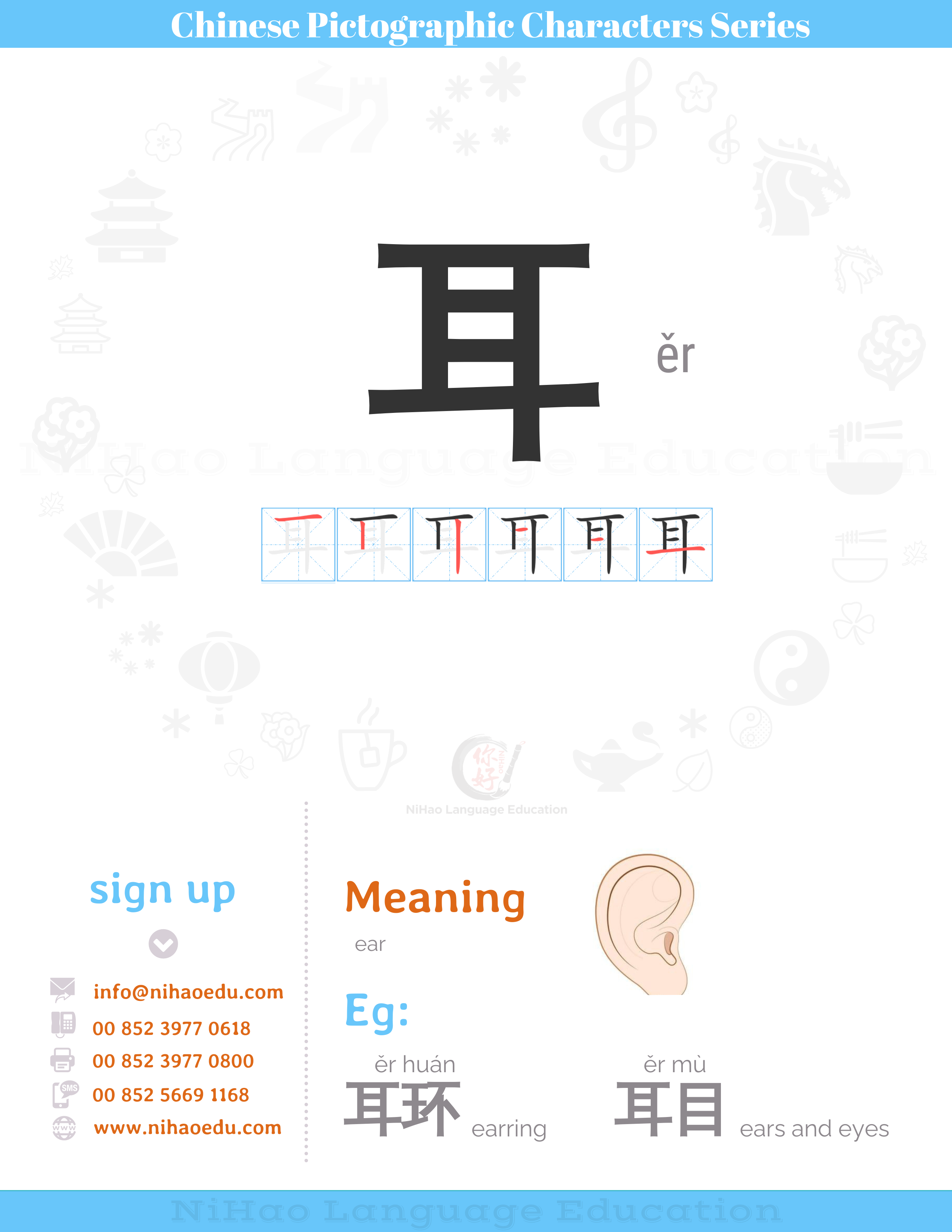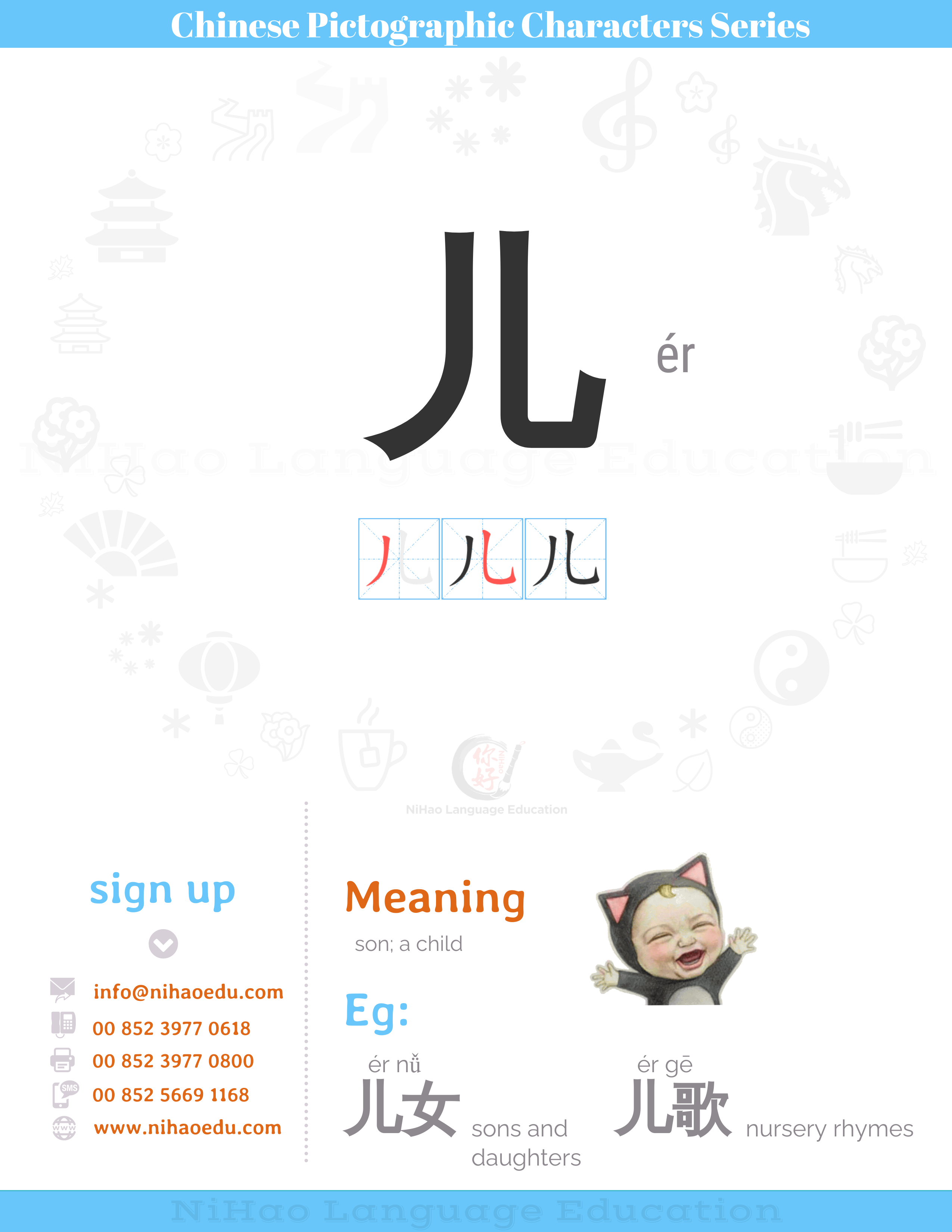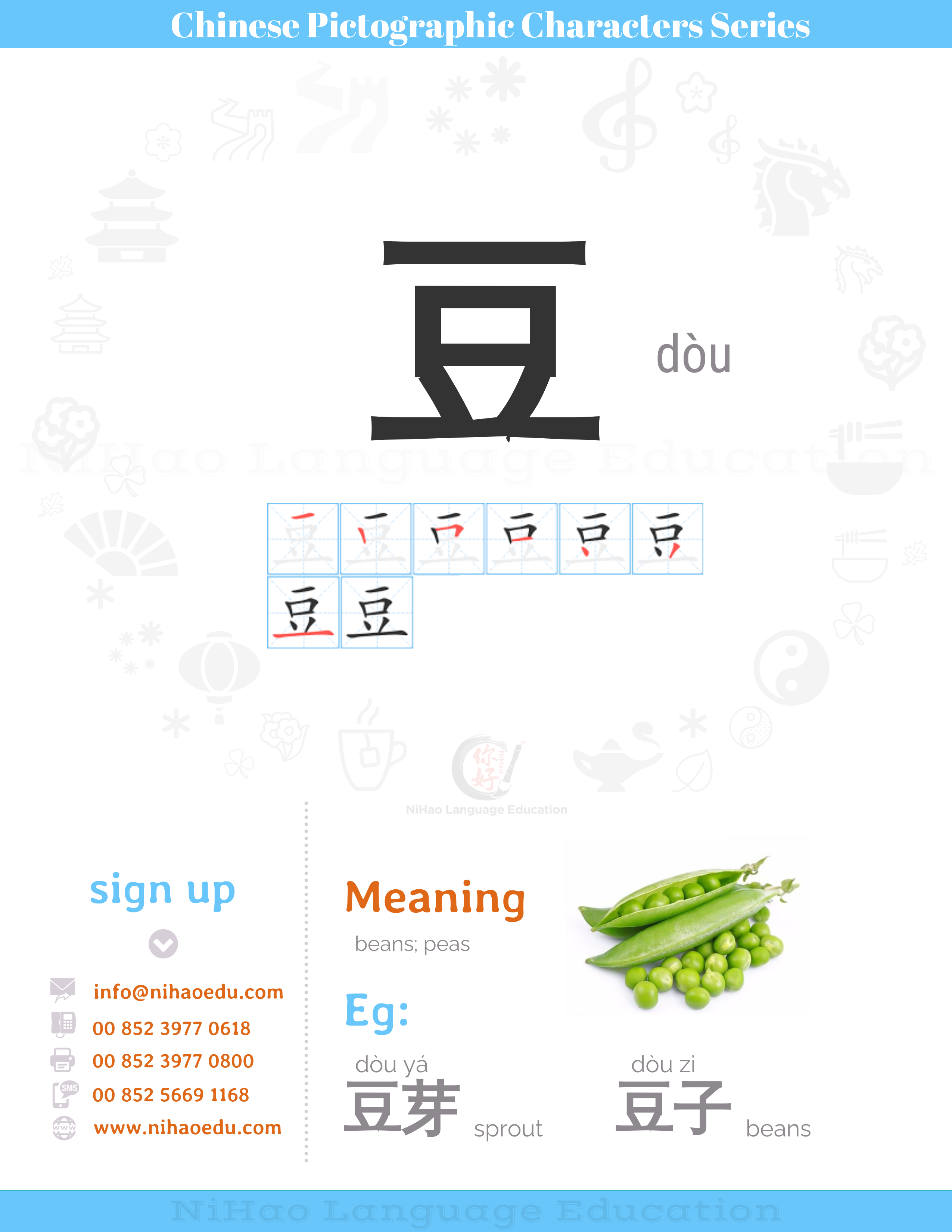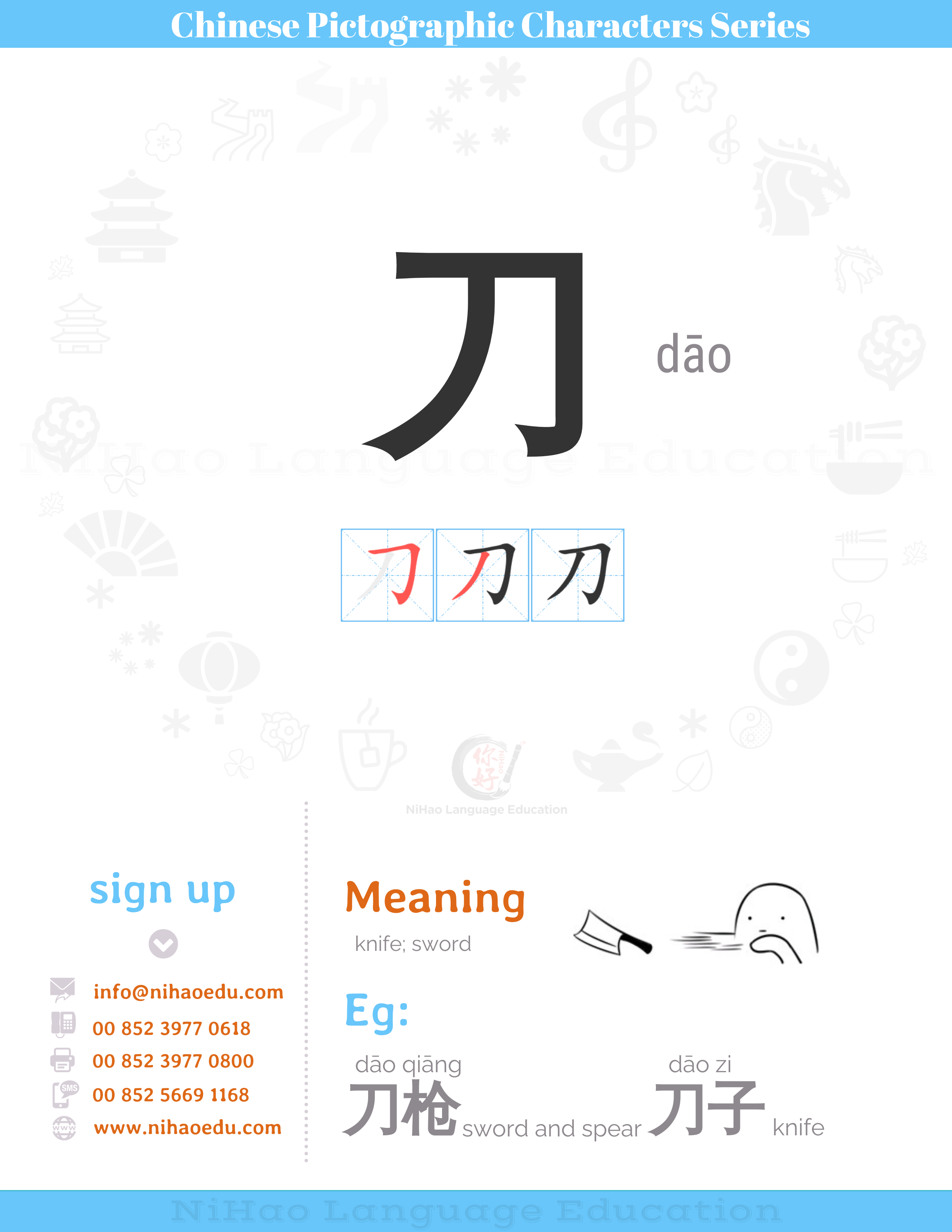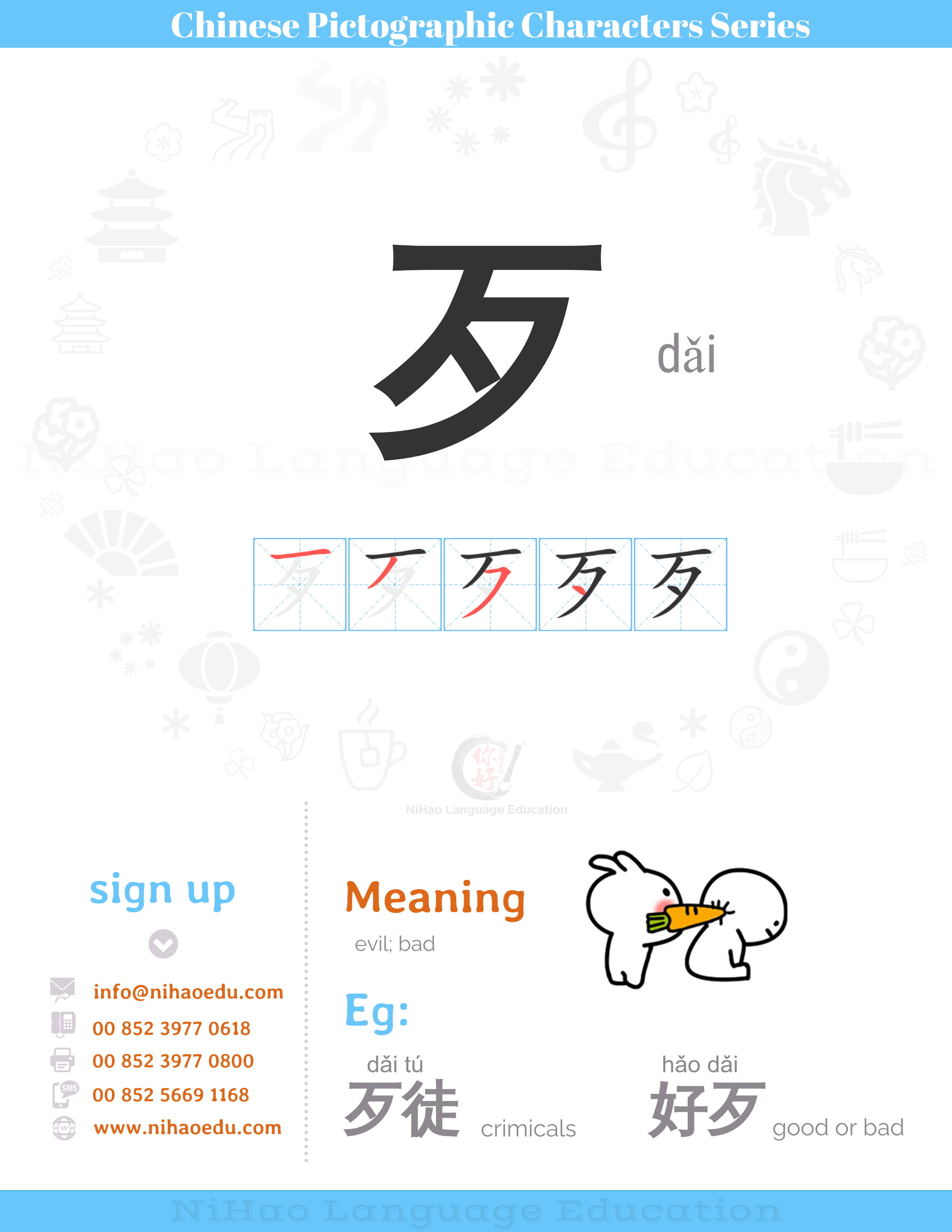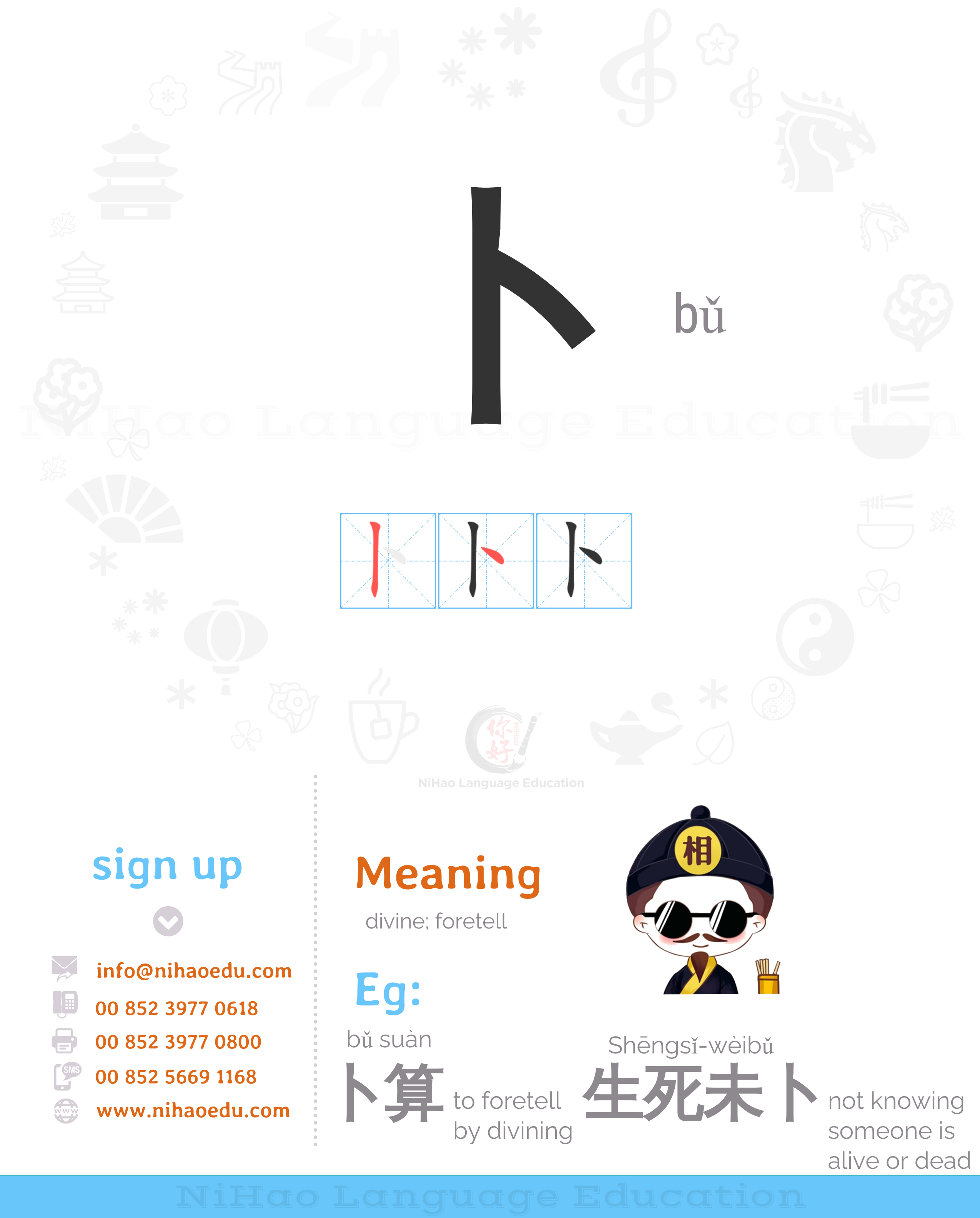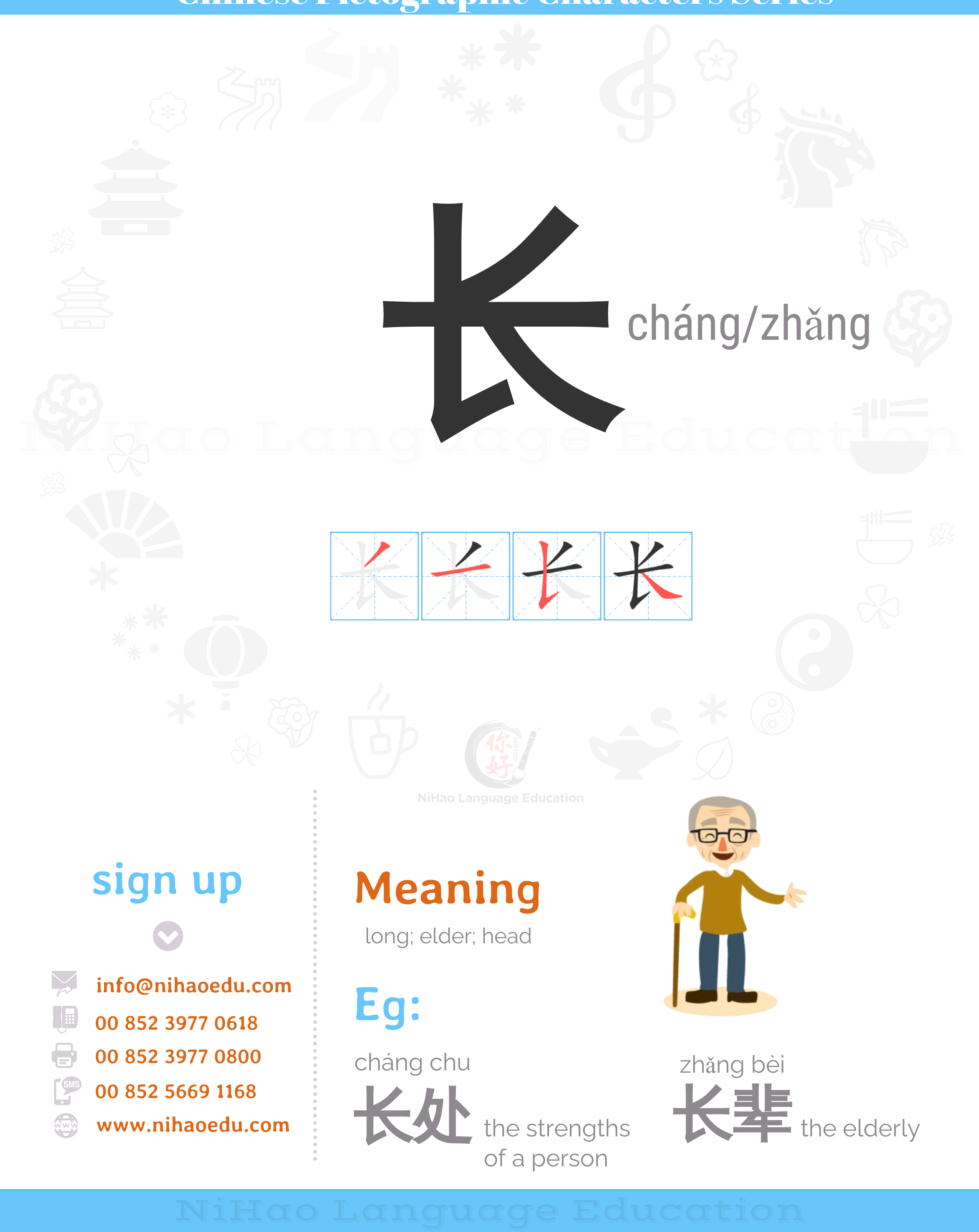The earliest form of the word 父fù looks like a hand holding a stone ax, which was then a weapon used to kill animals, as well as an essential tool in daily life. As using an ax required strength, such …
The pictogram of the word 非 depicts a bird’s wings spreading in opposite direction, indicating that the two are opposite or against each other. By extension, the word means ‘incorrect’ or something that is wrong, for example, 是非 (shì fēi, …
The word 方 now means ‘square’, but and the pictogram looks like the shape of an ear. The word 方used to refer to certain tribes who had a less-developed culture than the Han Chinese. , for example, 方言 (fāng yán, …
The word 耳 means ‘ear’ and the pictogram looks like the shape of an ear. The word 耳 is often used in phrases relating to the ear, for example, 耳朵 (ěr duo, ’ear’), 耳光 (ěr guāng, ‘slap in the face’), …
The word 儿 is the simplified form of the conventional character 兒. The pictogram of the conventional character shows an infant with a big head and a small body. The opening at the top of the pictogram represents the soft …
The pictogram of the word 豆 depicts a vessel with legs for keeping food in. the short line in the vessel represents the food inside it. The word now refers to most types of beans or peas. The word 豆 …
The word 刀 means ‘knife’ or ‘sword’. The pictogram of a word depicts a curved cutting tool with a short handle. The lower part of the pictogram represents the blade. In the past, before the introduction of gunpowder, swords were …
The pictogram of the word 歹dǎi represents the bones of a dead person. The word 歹dǎi is used in phrases to convey the meaning of ‘evil’ or ‘to do evil’, for example, 歹徒 (dǎitú,’criminals’),为非作歹 (wéifēizuòdǎi, ‘to do illegal and evil …
The word 卜 means ‘to the divine’. In the Shang dynasty, more than 3,000 years ago, the people consulted the gods about a lot of things by heating the shoulder-blades of oxen or tortoise shells over fore until cracks appeared. …
Chinese Radicals Series 长 长 长 can be used as a component in word-formation. As a component, it is often used to indicate pronunciation, for example, 张 (zhāng, ’open up’),帐 (zhàng, ’ account’) and 帐 (zhàng, ’net’). Idioms and phrases …
